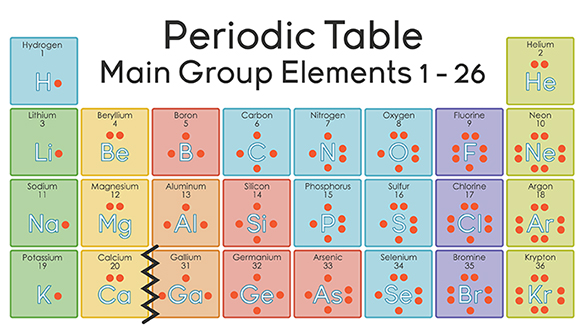Calcium Number Of Valence Electrons
Calcium has 2 valence electrons. Calcium has 20 electrons so they are arranged 2. Using orbital notation the electron structure is: #1s^(2)2s^(2)2p^(6)3s^(2)3p^(6)4s^(2)# You can see that there are 2 electrons in the outer energy level and these are the valence electrons. Calcium has 20 electrons and oxygen has 8 electrons, so the TOTAL number of electrons in CaO is 28. If you mean how many valence electrons are used, then calcium uses 2 valence electrons,.


Valence Electrons and Octets
The number of valence electrons, those electrons in the outermost energy level, determines the number of electrons an element will gain or lose. Since the families have the same pattern of outer electrons, the number of valence electrons is the same in each family.
The table above is a result of atoms losing and gaining electrons to form stable noble gas electron configurations. When an element loses electrons it commonly does so until all valence electrons are gone; thus, magnesium with 2 valence electrons will react to become Mg2+, magnesium cation by losing the 2 valence electrons. Likewise, when an element gains electrons, it will gain only enough electrons to fill the outer shell s and p-orbitals; such as, nitrogen with 5 valence electrons will gain 3 electrons to become N3–, nitrogen anion, so that there are 8 electrons in the outer shell. The full outer shell of 8 electrons is is called an octet, and ions are said to be stable when they have an octet. Here are two more examples:

How many valence electrons are transferred from the nitrogen atom to potassium in the formation of the compound potassium nitride? How many valence electrons are transferred from the calcium atom to iodine in the formation of the compound calcium iodide? What is the formula unit of.
- K = [Ne]3s1 ➔ (lose 1e – ) ➔ [Ne] = 1s22s22p6 = K1+
- S = [Ne]3s23p4 ➔ (gain 2e – ) ➔ [Ne]3s23p6 = S2– .
What Is Calcium Number Of Valence Electrons
Noble gases do not react because they already have full shells, ns2np6. The energy change when electrons are added or removed is too large because the effective nuclear charge is too high for an electron to be removed easily and because adding electrons would require using a new shell which is not favorable. For nonmetals in the second period that lose electrons, the number of electrons lost will result in the noble gas electron configuration of helium 1s2, so only two valence electrons are in the outer shell not an octet. Hydrogen usually loses one electron to become a single proton in the nucleus without any electrons in the electron cloud, H+; however, it very occasionally gains one electron to become H– with an electron configuration similar to helium.

